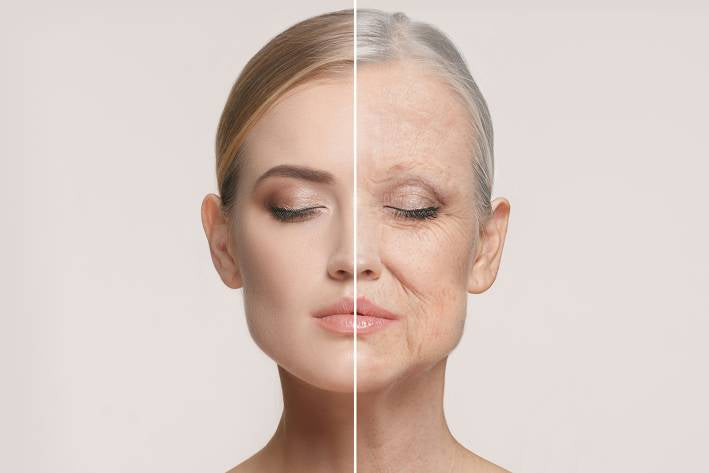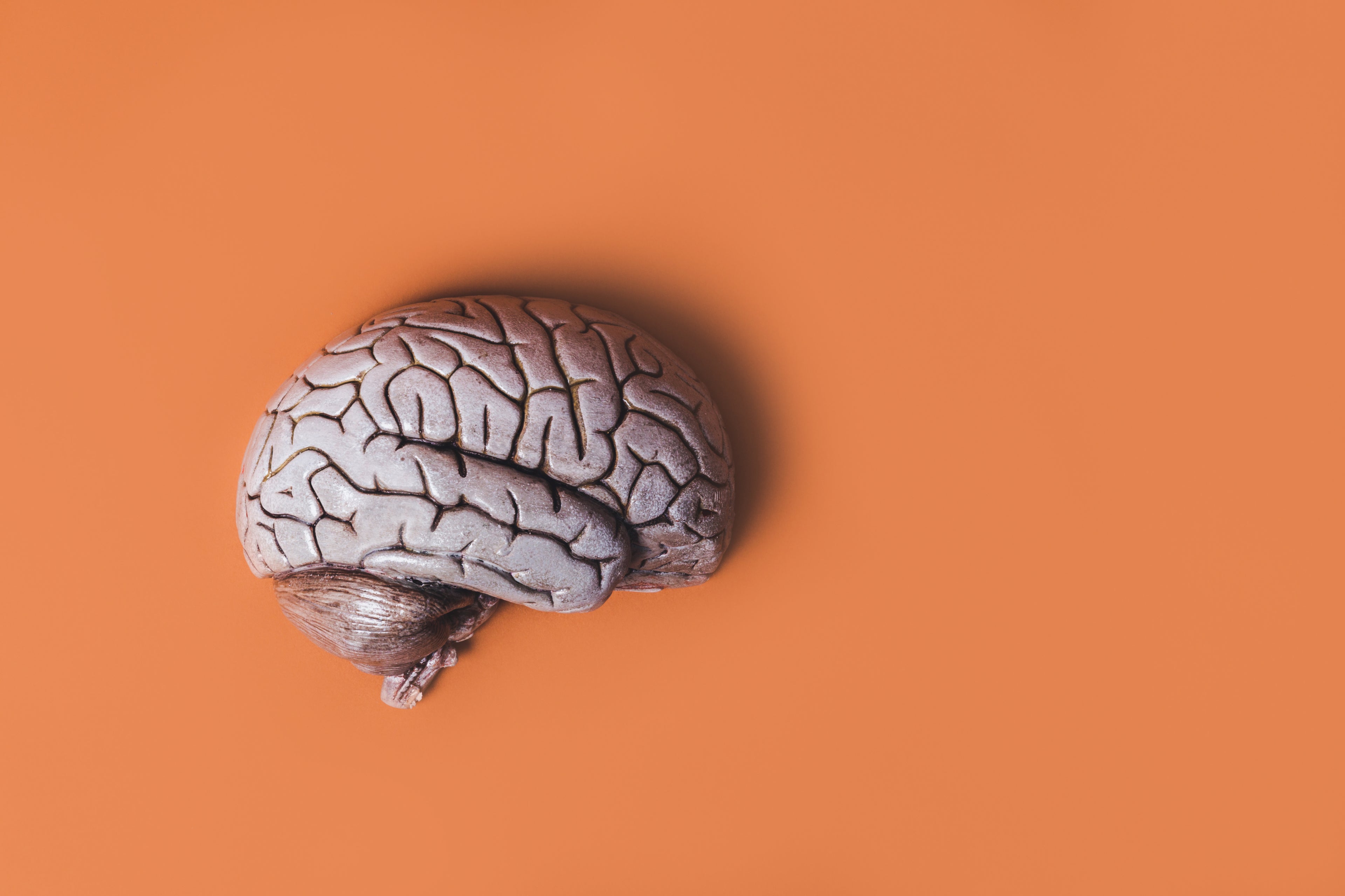
Anti-Aging and Wellness
Supporting Bone Health with Hyperbaric Oxygen Therapy
Osteoporosis is a condition where bones lose density and strength, making them more vulnerable to fractures. It’s particularly common in women after menopause, as lower estrogen levels can accelerate bone deterioration. While conventional treatments remain important, emerging research shows that Hyperbaric Oxygen Therapy (HBOT) may offer powerful support in managing this condition.
In osteoporosis, the body’s natural cycle of breaking down and rebuilding bone becomes unbalanced, leading to weakened bone structure. HBOT works by delivering concentrated oxygen to the body under pressure, which can help stimulate bone-building cells (osteoblasts) that may have become dormant. This activation may help slow bone loss and encourage the development of new bone tissue.
Recent studies focusing on post-menopausal women have shown that HBOT can help reduce the rate of bone loss on its own. More compellingly, when paired with traditional therapies such as calcitonin, HBOT has been linked to measurable increases in bone density. This points to a promising integrative approach to improving bone health and resilience. For more information on this study.

Clinical Benefits of HBOT
Uncovering the Broad-Spectrum Benefits of Hyperbaric Oxygen Therapy (HBOT)
Hyperbaric Oxygen Therapy (HBOT) is increasingly gaining recognition for its powerful potential in supporting healing across a range of health conditions—from neurological challenges to chronic wounds. As modern research advances, the science behind HBOT is revealing just how far-reaching its benefits can be. Here’s a closer look at the latest findings that are reshaping how this therapy is viewed in both traditional and integrative medicine.
Cognitive Recovery: HBOT for Mild Traumatic Brain Injury (mTBI)
New research highlights HBOT’s role in treating long-lasting symptoms of mild traumatic brain injury and post-concussion syndrome. By optimizing oxygen levels under controlled pressure, HBOT has shown the potential to ease symptoms like memory loss, fatigue, and brain fog—offering hope for patients dealing with persistent effects long after the initial injury.
Healing Chronic Wounds, Especially in Diabetes
Chronic wounds, such as those caused by diabetes, can be difficult to manage and slow to heal. Studies show that HBOT can significantly accelerate wound recovery and reduce the risk of complications like infection or amputation. As an adjunct to conventional care, HBOT is becoming an increasingly valuable tool in diabetic wound management.
Reevaluating Pressure: Less May Be More
Traditionally, higher pressure levels were thought to produce better outcomes in HBOT. However, recent findings suggest that lower pressures can be just as effective—especially in treating chronic brain injuries—while also maintaining a safer therapeutic profile. This reinforces the importance of tailored treatment protocols based on individual needs.
Post-COVID Recovery: Supporting the Body and Brain
For many, recovery from COVID-19 brings lingering challenges, from brain fog and fatigue to heart complications. HBOT is emerging as a powerful ally in post-COVID recovery, with studies showing improvements in neurocognitive function and cardiovascular health—thanks to the therapy’s ability to promote oxygen delivery, reduce inflammation, and stimulate tissue repair.
HBOT as a Supportive Option for Active COVID-19 Treatment
In addition to recovery, HBOT is being explored as a potential therapy during active COVID-19 infections. Clinical reviews point to its ability to improve oxygenation and reduce respiratory distress, suggesting it could be integrated into broader treatment plans with further research.
Diabetic Foot Ulcers: A Game-Changer in Wound Care
Diabetic foot ulcers are one of the most serious complications of diabetes, often leading to extended hospital stays or amputations. HBOT has been shown to boost healing rates when used alongside traditional treatments—offering a proactive, non-invasive option for long-term wound care.
HBOT in SARS-CoV-2 Pneumonia
Clinical trials are now evaluating HBOT for patients with SARS-CoV-2 pneumonia. Early results indicate improvements in blood oxygen levels and overall lung function, reinforcing HBOT’s potential role in supporting patients through severe respiratory conditions.
A New Era for HBOT
As scientific research continues to deepen our understanding, one thing becomes clear: HBOT is not just a therapy—it’s a powerful platform for healing across a wide spectrum of conditions. At PureO2Med, we’re committed to offering access to this transformative wellness technology, grounded in both clinical science and holistic care.
Exploring the Role of Hyperbaric Oxygen Therapy in Cancer Research
The treatment of aggressive cancers, such as certain forms of breast cancer, often involves complex, multi-modal strategies—most commonly chemotherapy, radiation, and surgery. Researchers continue to explore supportive approaches that may enhance the effectiveness of standard treatments or address underlying challenges, such as tumor hypoxia.
Understanding Tumor Hypoxia
Tumor hypoxia refers to a condition where cancerous tissues receive insufficient oxygen due to abnormal or restricted blood flow. This lack of oxygen can create a more hostile environment for treatment, as many conventional therapies—especially radiation and some forms of chemotherapy—are more effective in oxygen-rich conditions. Tumor hypoxia is associated with resistance to treatment and may influence treatment outcomes.
What Research Says About HBOT and Tumor Oxygenation
A study published in PubMed explored how Hyperbaric Oxygen Therapy (HBOT)—a process in which individuals breathe oxygen in a pressurized environment—could affect tumor oxygen levels and potentially improve the biological conditions under which cancer treatments are delivered.
In this preclinical research, cells were exposed to HBOT protocols, and scientists examined how elevated oxygen levels influenced tumor hypoxia and cellular responses to treatment. The findings suggested that HBOT helped increase oxygenation within the tumor microenvironment, a change that may influence how responsive cancer cells are to therapies like radiation and chemotherapy.
The study also reported that HBOT exposure appeared to reduce markers of tumor hypoxia and potentially enhanced the biological activity of standard treatments in controlled settings. Although these results are promising, the researchers emphasized that further investigation, especially in human clinical trials, is necessary to determine how this approach could be applied safely and effectively in real-world oncology care.
A Growing Area of Investigation
While the research is still developing, HBOT is being studied for its adjunctive role in various areas of medicine, including oncology. Its ability to increase tissue oxygenation makes it a subject of interest for scientists exploring ways to optimize the tumor environment prior to, or in conjunction with, established cancer therapies.
It’s important to note that HBOT is not a treatment for cancer itself, and its potential role in oncology remains investigational. Current evidence supports its use only in specific, approved medical conditions. Any consideration of HBOT as part of a broader care plan should be made in consultation with a licensed oncology team.
Conclusion
Emerging studies indicate that increasing oxygen delivery to tumors may influence their biological response to traditional therapies. HBOT’s role in this area continues to be actively researched, with early findings suggesting it may help address one of the key challenges in cancer treatment: tumor hypoxia. As this field evolves, ongoing research will help clarify where and how HBOT might fit into the broader landscape of supportive cancer care.

Neurocognitive and Psychological Benefits
Hyperbaric Oxygen Therapy and Autism: Emerging Insights into Cognitive and Behavioral Support
Autism Spectrum Disorder (ASD) affects millions of children globally and presents ongoing challenges in communication, social engagement, and behavior. While there is no known cure for autism, a variety of supportive therapies have been explored to help improve overall quality of life. One therapy gaining increased attention in both clinical and wellness communities is Hyperbaric Oxygen Therapy (HBOT).
The Science Behind HBOT and Brain Function in Autism
Many children with autism show signs of cerebral hypoperfusion—reduced blood flow in certain areas of the brain. This lack of adequate circulation may impact neurological processes linked to attention, behavior, and sensory integration.
HBOT works by delivering oxygen in a pressurized environment, increasing the amount of oxygen that dissolves in the bloodstream and reaches underperfused tissues—including the brain. When administered at 1.3 ATA, the mild pressure level used in soft-shell chambers, oxygen absorption is significantly enhanced, even without the use of 100% oxygen. This elevated oxygen availability may support cellular metabolism, reduce inflammation, and stimulate neuroplasticity—processes that are essential for brain function and development.
Clinical Observations: Improvements in Core Autism Symptoms
A 2020 clinical study assessed the impact of HBOT on children with autism, using a 40-session protocol at 1.5 ATA. While PureO2Med offers sessions at a milder 1.3 ATA, the underlying mechanisms and outcomes remain highly relevant.
In the study, 39 children received one-hour HBOT sessions over several weeks. Progress was measured using the Autism Treatment Evaluation Checklist (ATEC) and the Childhood Autism Rating Scale (CARS). Researchers observed significant improvements in several core areas. Children demonstrated increased social engagement and cognitive awareness, along with enhanced sensory responsiveness and verbal communication. Improvements in emotional and behavioral regulation were also noted throughout the course of treatment.
Younger participants in particular showed notable gains in sociability and imaginative play, along with reduced sensitivity to sound. Older children benefited as well, especially in the form of better emotional control and a decrease in repetitive or obsessive speech patterns. These improvements suggest meaningful support for both developmental growth and day-to-day functioning.
HBOT as a Supportive Wellness Therapy
Although further large-scale studies are needed, early evidence suggests that mild HBOT at 1.3 ATA may offer supportive benefits for children with autism. Improvements are believed to result from enhanced oxygenation, reduced neuroinflammation, and the stimulation of brain repair mechanisms.
At PureO2Med, we view HBOT as a complementary wellness therapy—not a standalone treatment. We prioritize a science-backed, family-focused approach and recommend that HBOT be used as part of a broader care plan, developed in consultation with a qualified healthcare professional.
A Note of Caution
Each child with autism is unique. Before beginning HBOT or any new therapy, it’s important to consult with your healthcare provider to determine what’s best for your child’s individual needs and circumstances.
View full study findings and research here.

Post-Surgery and Injury Recovery
Hyperbaric Oxygen Therapy and Bone Healing: A New Frontier in Recovery
Healing from bone injuries or orthopedic surgery often requires time, patience, and careful rehabilitation. For many patients, especially those eager to resume daily activities, the recovery period can be physically and emotionally demanding. Emerging research now points to Hyperbaric Oxygen Therapy (HBOT) as a promising adjunct therapy that may accelerate bone repair and improve overall healing outcomes.
How HBOT Supports Bone Regeneration
A preclinical study using a rat model, published in the Journal of Orthopaedic Surgery and Research, offers valuable insights into how HBOT may influence bone healing processes in humans. While animal studies are preliminary, the findings highlight several key mechanisms by which HBOT could enhance bone repair and post-operative recovery.
One of the most compelling outcomes was the acceleration of early-stage bone formation. By the third day of treatment, subjects receiving HBOT showed faster initial bone growth compared to untreated controls. This suggests that patients recovering from fractures or surgical procedures may benefit from quicker tissue regeneration, potentially leading to earlier mobility and reduced time spent in immobilization.
In addition to speed, HBOT appeared to enhance the quality and completeness of bone formation. The therapy was associated with a significant increase in new bone tissue production, which may help ensure that healing bones are not only restored more quickly, but also with greater strength and structural integrity. This could lower the risk of delayed union or re-injury, particularly in complex or high-risk cases.
The study also observed elevated levels of Runx2, a protein that plays a central role in bone development and remodeling. This suggests that HBOT may stimulate key molecular pathways involved in osteogenesis, offering a more biologically robust healing process.
Crucially, HBOT did not disrupt natural bone resorption—the body’s process of removing old or damaged bone during remodeling. Maintaining this balance is essential to healthy bone regeneration. Additionally, HBOT appeared to moderate inflammation, helping reduce excessive swelling and discomfort during the critical early phases of recovery.
What This Means for Patients
For individuals recovering from bone fractures, joint surgeries, or orthopedic trauma, HBOT may serve as a powerful support therapy. By accelerating healing timelines, improving bone strength, and reducing inflammation, HBOT has the potential to shorten hospital stays, lower reliance on pain medications, and enable a faster return to daily activity.
At PureO2Med, we offer HBOT at 1.3 ATA, designed to safely support recovery in a non-invasive, wellness-focused setting. While this therapy should always be considered alongside guidance from your medical team, it represents a compelling option for those seeking to enhance their healing potential through science-backed wellness care.
Hyperbaric Oxygen Therapy and Chronic, Hard-to-Heal Wounds
Chronic wounds—such as diabetic foot ulcers, pressure sores, and post-surgical wounds—pose a significant clinical challenge due to prolonged inflammation, poor circulation, and impaired tissue regeneration. Hyperbaric Oxygen Therapy (HBOT) has been increasingly studied as an adjunctive treatment for such wounds, offering a biologically grounded approach to enhancing healing.
Mechanisms of Action
HBOT involves breathing oxygen in a pressurized environment, which significantly increases the amount of oxygen dissolved in the plasma. This elevated oxygen delivery supports several physiological processes involved in wound repair.
One of the primary mechanisms is the modulation of inflammation. HBOT has been shown to reduce the expression of proinflammatory cytokines, such as tumor necrosis factor-alpha (TNF-α), and prostaglandins like PGE2 and COX-2 mRNA. These inflammatory mediators are often upregulated in chronic wounds, perpetuating tissue damage and delaying healing.
Simultaneously, HBOT stimulates the production of angiogenic and regenerative growth factors, particularly vascular endothelial growth factor (VEGF). VEGF promotes the formation of new capillaries, improving local blood flow and nutrient delivery to the wound bed—critical steps in effective tissue repair.
Outcomes and Clinical Implications
By reducing inflammation and enhancing oxygen-dependent healing pathways, HBOT creates a more favorable environment for cell proliferation, collagen synthesis, and angiogenesis. Clinical studies have reported improved healing rates and reduced need for surgical intervention in patients receiving HBOT for chronic wounds, particularly in diabetic populations.
These effects are not only biochemical but also structural—leading to faster wound closure, decreased infection rates, and overall improved outcomes when integrated into comprehensive wound care protocols.
Conclusion
While not a first-line treatment, HBOT offers evidence-based potential as a complementary therapy for stubborn wounds that fail to respond to conventional care. Continued research and controlled trials are refining its application, but current data supports its role in modulating inflammation, enhancing tissue oxygenation, and accelerating wound healing in select patient populations.

Sports and Physical Performance
Hyperbaric Oxygen Therapy and Athletic Recovery: Supporting Performance Through Oxygenation
In the world of sports and physical performance, recovery is a critical factor in achieving consistent results and preventing injury. Hyperbaric Oxygen Therapy (HBOT) is gaining interest as a supportive tool for athletic recovery, with studies suggesting it may enhance oxygen delivery to tissues and assist the body’s natural repair processes.
During intense training, muscle fibers undergo microtrauma, inflammation increases, and lactic acid accumulates. HBOT works by increasing the amount of oxygen dissolved in the blood, which may help reduce inflammation, accelerate soft tissue repair, improve clearance of metabolic waste, and support cellular energy production.
A 2018 study published in the Journal of Strength and Conditioning Research explored the effects of HBOT on recovery following eccentric exercise. Participants who received HBOT showed reduced delayed-onset muscle soreness, lower levels of creatine kinase (a marker of muscle damage), and a quicker return to baseline muscle strength compared to those who did not receive the therapy.
Study: Babul S, Rhodes EC, Taunton JE, et al. “Effect of Hyperbaric Oxygen Therapy on DOMS and Recovery of Muscle Function.” J Strength Cond Res. 2018;32(2):494–502. PubMed
While this study used a pressure of 2.0 ATA, similar mechanisms—such as enhanced oxygen delivery and inflammation modulation—are also present at 1.3 ATA, the level typically used in HBOT settings.
As research continues, HBOT may offer athletes a non-invasive option to support recovery, reduce training downtime, and optimize performance outcomes when integrated thoughtfully into a broader recovery plan.
